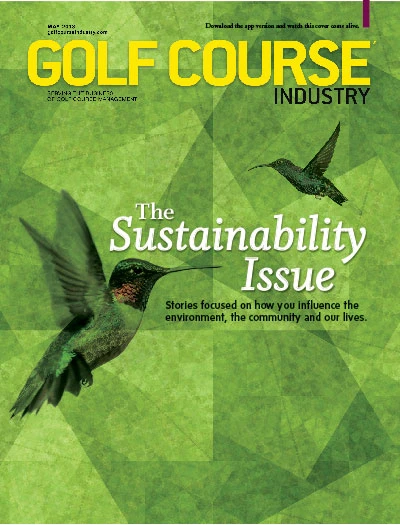 A golf course is often home to many different pests and obnoxious creatures that wreak havoc on the turf. A lot of times it is easier to try to get rid of them, but maybe that’s not the right answer. Maybe you need to move them.
A golf course is often home to many different pests and obnoxious creatures that wreak havoc on the turf. A lot of times it is easier to try to get rid of them, but maybe that’s not the right answer. Maybe you need to move them.
That’s what The Heritage Golf Course at Westmoor did with the prairie dog colony thriving on the land the course was built on.
Prior to construction in 1998, Heritage worked with Audubon International to create a best management practices plan that would ensure the course be built Sanctuary Certified.
One of the issues with the land was that a prairie dog colony containing 100-150 prairie dogs was located on the front nine of the planned course.
“We thought instead of trying to work around the prairie dogs, we’d move them,” says superintendent Lance Johnson.
An area of similar size to the colony was identified southeast of No. 5 and construction began. A contractor came to the course and made starter holes five to six feet deep for the prairie dogs to expand upon and create their own tunnel system. After the new habitat was created, they were able to start the relocation process.
A prairie dog specialist came out to humanely remove the prairie dogs from their holes. Using a 250-gallon water trailer filled with water and dish soap, the specialist stuck the hose in the holes and filled them with soapy water. The soap would irritate the prairie dog’s eyes and they would crawl out slowly, making it easier to catch them. The process took a few weeks and they ended up catching 120-130 of them.
Since the relocation, the colony has existed, even though the size has dwindled. A bubonic plague outbreak down the road within the last few years traveled to Heritage’s colony, resulting in the loss of some of the prairie dogs. Currently, there are 20 to 30 left.
Despite the new holes, some of the prairie dogs did continue to come out onto the course. To discourage that, Heritage put in a buried chain link fence, roughly 600 feet long. The fence was eight feet tall, and they put about five feet of it into the ground. They also used straw bales and native grass to build a better environment to keep them there.
“We were trying to create a visual barrier, because if a prairie dog can’t see it, they won’t go there,” Johnson says.
The habitat isn’t perfect, but Johnson says it gets the job done.
“Every now and then we get a couple coming across,” he says. “As the years have gone by, they’re less and less interested in coming to the golf course.”
Katie Tuttle is GCI’s assistant editor.

Explore the May 2013 Issue
Check out more from this issue and find your next story to read.
Latest from Golf Course Industry
- The Cabot Collection announces move into course management
- Carolinas GCSA raises nearly $300,000 for research
- Advanced Turf Solutions’ Scott Lund expands role
- South Carolina’s Tidewater Golf Club completes renovation project
- SePRO to host webinar on plant growth regulators
- Turfco introduces riding applicator
- From the publisher’s pen: The golf guilt trip
- Bob Farren lands Carolinas GCSA highest honor






